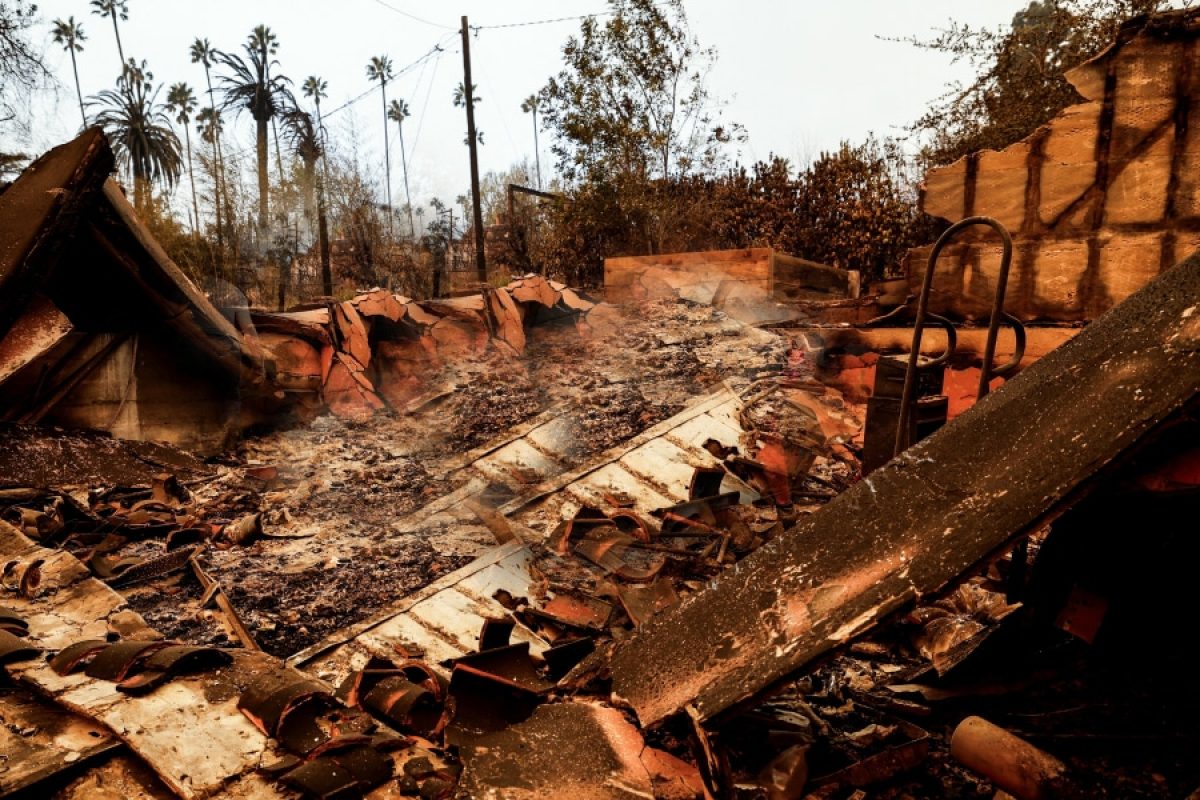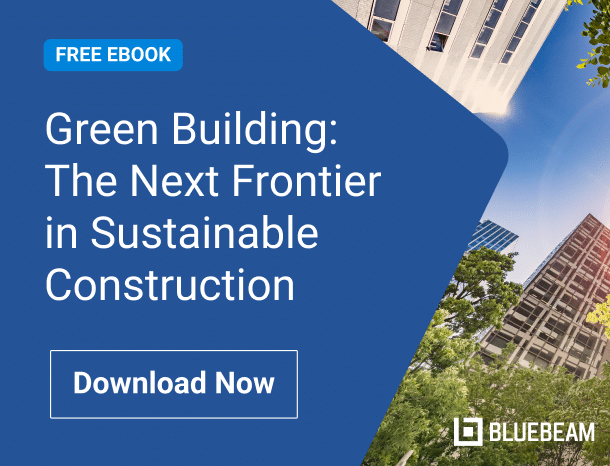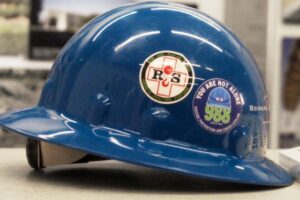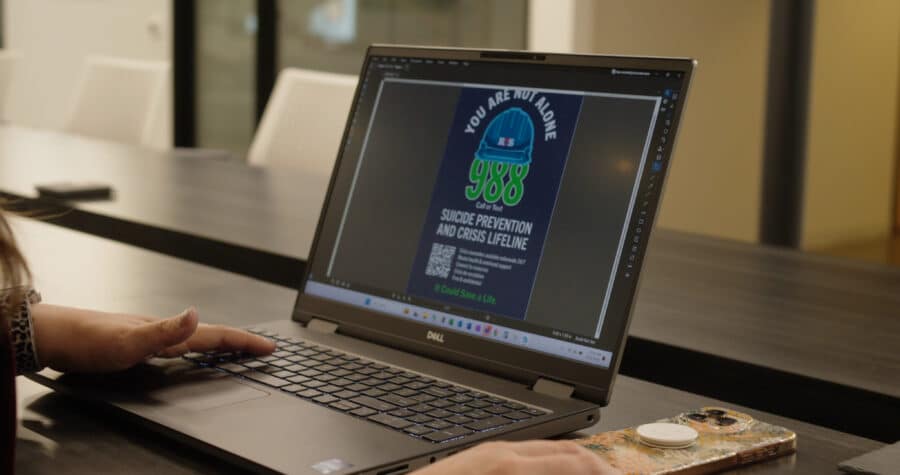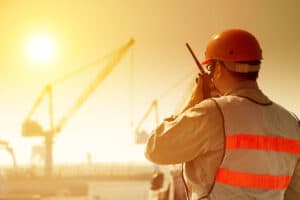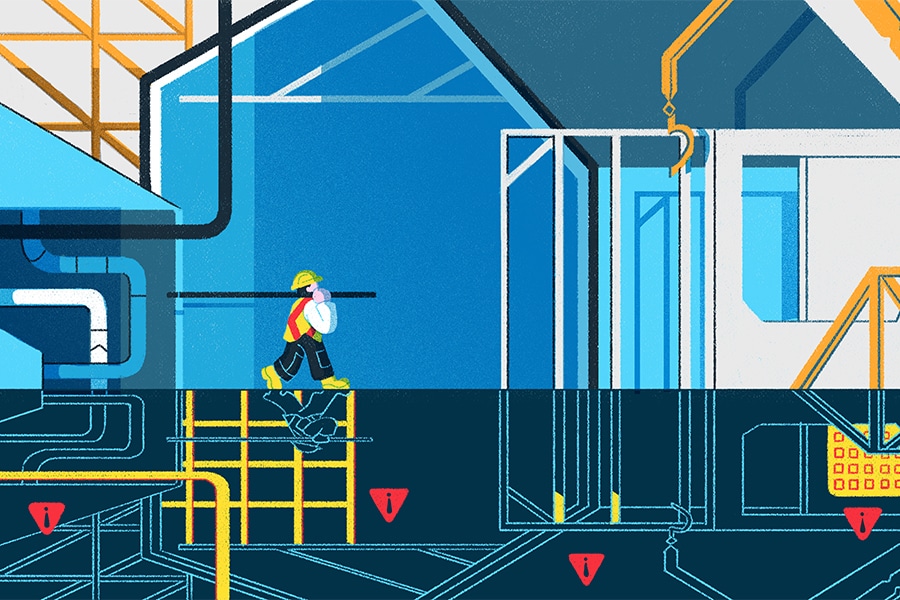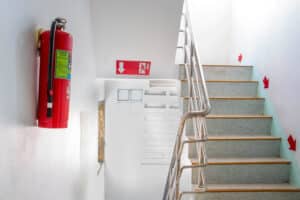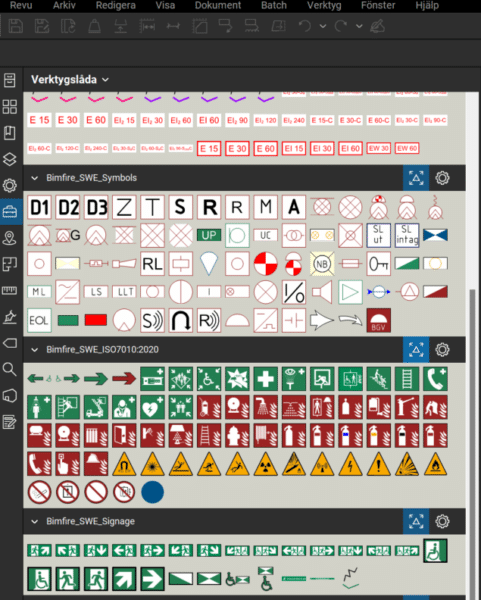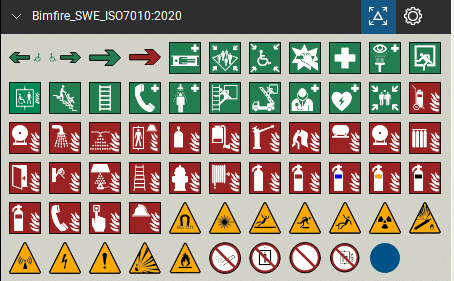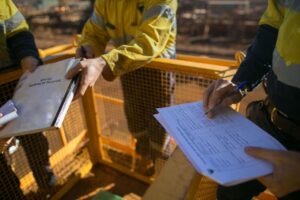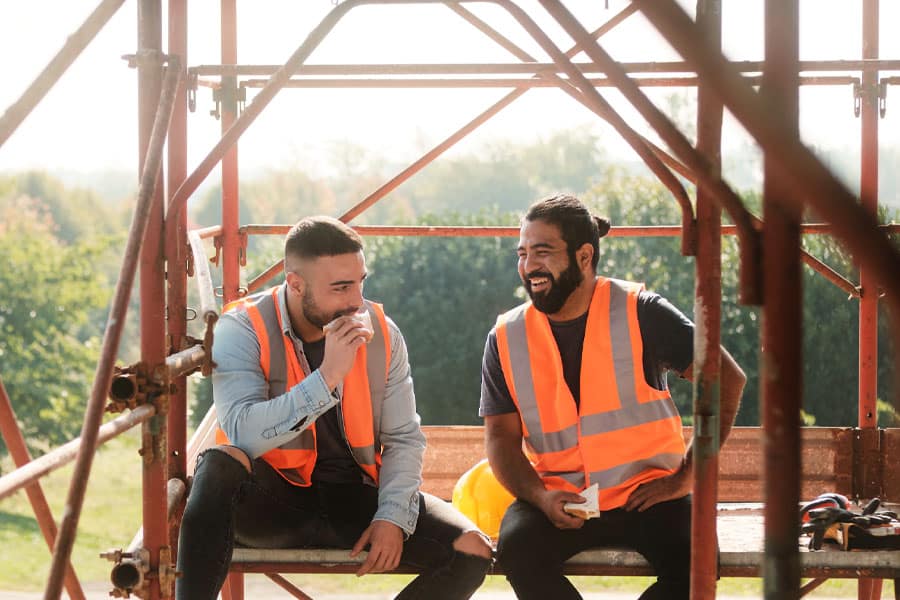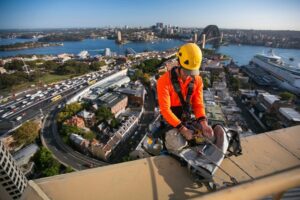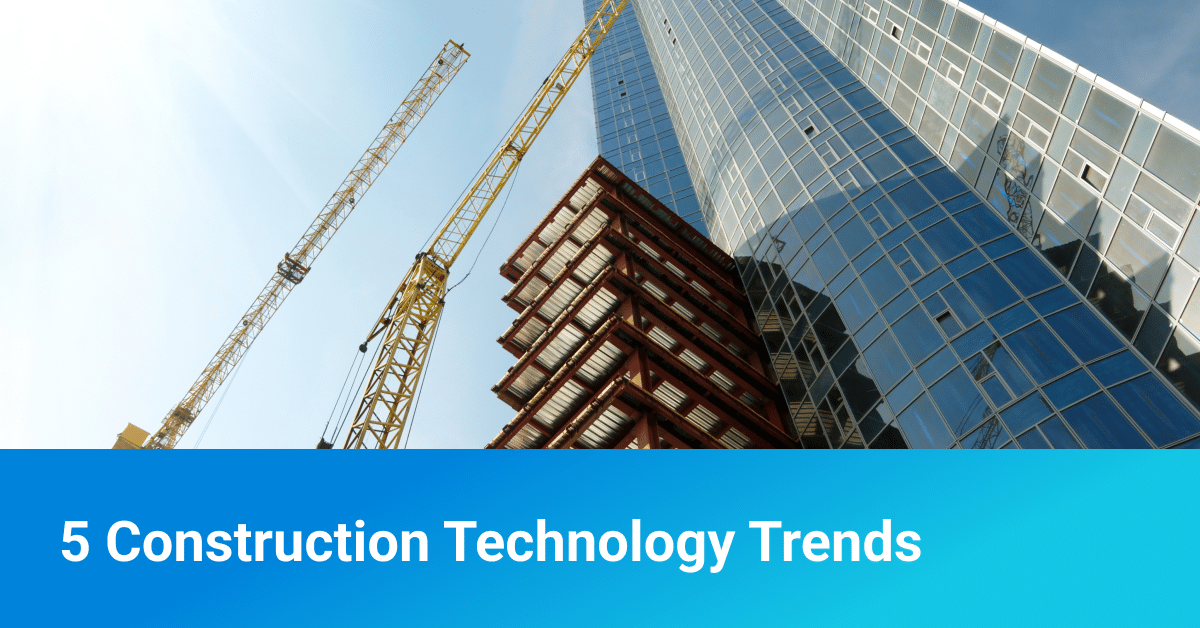In the wake of the recent Los Angeles wildfires, which displaced tens of thousands of residents and destroyed more than 16,000 structures, the city and the rest of California finds itself at a pivotal moment. The catastrophic scale of destruction is a grim reminder of the vulnerabilities inherent in the region’s built environment.
But for the architecture, engineering and construction (AEC) industry, these events underscore the urgent need to reimagine building practices in wildfire-prone regions.
Wildfire recovery efforts are not merely about rebuilding what was lost; they are about innovating for the future. From fire-resistant materials to climate-adaptive urban planning, these efforts are reshaping how communities prepare for and respond to disasters, fostering a new era of resilience and sustainability in construction.
How Wildfires Devastate Communities and Threaten Critical Infrastructure
California’s wildfires leave scars that extend far beyond the flames. The economic toll is staggering, with billions spent annually on property damage, firefighting efforts and rebuilding expenses. According to the California Department of Insurance, insured losses from the 2018 Camp Fire alone exceeded $10 billion. Yet the human costs—displacement, loss of life and the destruction of community landmarks—are immeasurable.
Existing infrastructure exacerbates the problem. Many older buildings, constructed before modern fire codes, are particularly vulnerable to fire damage. Urban sprawl, encroaching into fire-prone areas, has only increased exposure to risk. Meanwhile, climate change plays a growing role, extending fire seasons and creating conditions—such as prolonged droughts and dense, dry vegetation—that turn entire regions into tinderboxes.
Cutting-Edge Innovations in Wildfire-Resilient Architecture and Design
The destruction caused by wildfires has spurred the AEC industry to innovate in ways that could significantly mitigate future risks.
Resilient Building Materials: Advanced materials are becoming essential tools in wildfire-prone areas. Fire-resistant materials such as concrete, steel and treated wood are increasingly replacing traditional timber construction. Flame-retardant coatings and double-glazed, fire-resistant glass further enhance building safety.
Design Strategies: Fire-resilient design is equally critical. Creating defensible spaces—buffer zones of cleared vegetation around buildings—has proven effective in reducing fire spread. Roofs made from metal or tile and fire-resistant siding materials such as fiber cement are also becoming standard in high-risk areas. Modular construction is gaining traction for its ability to expedite rebuilding while incorporating state-of-the-art safety features.
Urban Planning Innovations: Beyond individual structures, urban planning plays a pivotal role in wildfire resilience. Zoning laws are increasingly discouraging development in high-risk areas, while greenbelts and other natural firebreaks are being integrated into community designs.
……
Build Fire-Resilient Properties: Essential Tips for Homeowners and Builders
Wildfires pose a growing threat, but proactive design and construction strategies can significantly reduce risk. Here’s how homeowners and commercial builders can build safer, more resilient properties:
For Homeowners:
- Invest in Fire-Resistant Materials: Opt for non-combustible roofing (metal or tile) and siding (fiber cement) to fortify your home.
- Create Defensible Spaces: Clear vegetation and flammable materials at least 30 feet from your property to reduce fire spread.
- Maintain Landscaping: Use drought-resistant plants and keep gutters and roofs free of debris.
- Install Fire-Rated Windows and Doors: Double-glazed, fire-resistant glass and solid core doors can provide extra protection.
For Commercial Builders:
- Incorporate Firebreaks in Site Design: Integrate greenbelts and defensible zones into large-scale developments.
- Choose Resilient Construction Methods: Adopt modular construction with fire-resistant components for faster and safer builds.
- Follow Updated Fire Codes: Stay compliant with local fire-resistant building regulations and zoning laws.
- Leverage Technology: Use tools like building information modeling (BIM) to assess fire risk and optimize designs.
……
Aligning Wildfire Recovery Efforts with Long-Term Climate Goals
Rebuilding after wildfires provides a unique opportunity to align construction practices with broader climate adaptation and sustainability goals. Retrofitting homes and businesses to meet LEED standards and other green certifications is becoming standard practice, reducing environmental impacts while enhancing resilience.
Renewable Energy Integration: Renewable energy solutions are a cornerstone of this approach. Solar panels, paired with battery storage systems, are increasingly installed on rebuilt properties, ensuring reliable energy access even during power outages—a frequent byproduct of wildfire emergencies.
Water Management Innovations: Drought-resistant landscaping and water recycling systems are essential in a state where water scarcity compounds the challenges of wildfire recovery. These measures not only conserve resources but also help reduce the intensity of fires by minimizing available fuel.
Leveraging Advanced Technology for Efficient and Resilient Wildfire Recovery
Technology is revolutionizing the way architects, engineers and contractors approach wildfire recovery.
Digital Collaboration Tools: Platforms that facilitate seamless communication among stakeholders, enabling real-time updates and document sharing that streamline rebuilding projects.
Building Information Modeling (BIM): BIM software allows teams to simulate fire risks during the planning phase, ensuring that new designs are optimized for resilience. It also aids in assessing the long-term performance of materials and systems under fire conditions.
Drones and Robotics: Drones are increasingly used to assess damage safely and quickly, providing detailed site surveys that inform rebuilding plans. Robotics, meanwhile, assist with tasks such as debris removal and site preparation, accelerating the recovery timeline.
Driving Success Through Collaborative Wildfire Recovery Efforts
Effective wildfire recovery requires collaboration across sectors. Public-private partnerships are proving instrumental, with local governments working alongside AEC firms to streamline rebuilding efforts. Financial incentives, such as grants for fire-resistant retrofits, further support homeowners and businesses in adopting resilient practices.
…..
The Race to Stop Wildfires Before They Spread
Wildfires are becoming more frequent and destructive, but new technology could change how we detect and fight them. The XPRIZE Wildfire, an $11 million competition, is driving innovation in wildfire prevention and response.
Space-Based Detection: Competitors are developing AI-driven satellite systems to detect fires across vast landscapes in real time, enabling faster emergency responses.
Autonomous Suppression: Teams are creating AI-powered drones, robotic firefighters and advanced suppression tools capable of detecting and extinguishing high-risk fires within 10 minutes.
Advancing Fire Intelligence: Lockheed Martin is sponsoring a $1 million bonus prize for breakthroughs in wildfire detection accuracy.
With wildfire recovery efforts reshaping cities like Los Angeles, the XPRIZE Wildfire competition offers a glimpse into a future where fires are stopped before they spread, protecting lives, property, and ecosystems.
Learn more: xprize.org/prizes/wildfire
…..
Community engagement is equally vital. Residents are being involved in planning processes to ensure that rebuilt neighborhoods reflect their needs and priorities. Public education campaigns are also raising awareness about maintaining fire-resistant properties through regular upkeep and vegetation management.
Case Studies in Resilient Wildfire Rebuilding
California is already seeing the fruits of innovative wildfire recovery efforts.
Paradise, California: After the 2018 Camp Fire decimated the town of Paradise, rebuilding efforts focused on fire-resistant materials and defensible spaces. The town’s new community center, constructed with steel framing and non-combustible materials, serves as a model for resilience.
Sonoma County: Following the Tubbs Fire in 2017, Sonoma County implemented stricter zoning laws and invested in fire-resistant rebuilding. These efforts, combined with community education, have reduced vulnerability in the region.
Challenges and Opportunities in Wildfire Recovery and Resilient Construction
While significant progress has been made, challenges remain. The financial burden of rebuilding with fire-resistant materials and technologies can be prohibitive for many homeowners. Regulatory hurdles, such as lengthy permitting processes, also delay recovery efforts.
Yet, these challenges present opportunities. As demand for resilient construction grows, so does the market for innovative materials and technologies. California’s experiences can serve as a blueprint for global wildfire recovery efforts, positioning the state as a leader in climate-resilient construction.
…..
Wildfires significantly impact California’s built environment, with substantial economic and structural consequences. Here are some key statistics:
- Annual Economic Losses: Between 2017 and 2021, for example, California experienced average annual economic losses of approximately $117.4 billion due to wildfires. This figure encompasses property damage, health costs and indirect economic impacts.
- Property Damage: During the same period, the state incurred average annual property losses estimated at $9.9 billion, adjusted for inflation. This includes destruction and damage to residential, commercial and public structures.
- Structures at Risk: A significant number of California homes are situated in high-risk fire zones. An analysis estimates that approximately 1.4 million homes are located in these areas, with a potential rebuilding cost around $600 billion.
- Recent Wildfire Impact: The most recent Los Angeles wildfires caused economic losses initially estimated between $52 billion and $57 billion. However, updated projections now estimate the total economic impact to be between $250 billion and $275 billion, with property damage alone ranging from $28 billion to $54 billion.
…..
Building a Resilient and Sustainable Future After Wildfires
California’s wildfire recovery efforts will undoubtedly reshape the AEC industry, driving advancements in materials, design and urban planning. As wildfires grow in intensity and frequency, these innovations are paving the way for safer, more sustainable communities.
For the AEC industry, this moment represents an opportunity to lead by example, integrating resilience and sustainability into every project. Policymakers must support these efforts with funding and streamlined regulations, while communities play their part by maintaining fire-resistant properties and advocating for thoughtful urban planning.
In rebuilding from the ashes, Los Angeles and the rest of California are not just restoring what was lost, but are building a future where architecture and construction adapt to, and mitigate, the challenges of a changing climate.
As we reflect on the profound impact of these wildfires, it’s important to acknowledge that Bluebeam was not immune to the devastation. Two of our own employees were directly impacted by the Eaton fire, and as a company, we stand by them during this challenging time. If you feel so inclined, please consider supporting their GoFundMe campaigns (here and here), which have been set up to assist with their recovery. Every bit of help goes a long way, and we deeply appreciate the kindness and support from our community.

